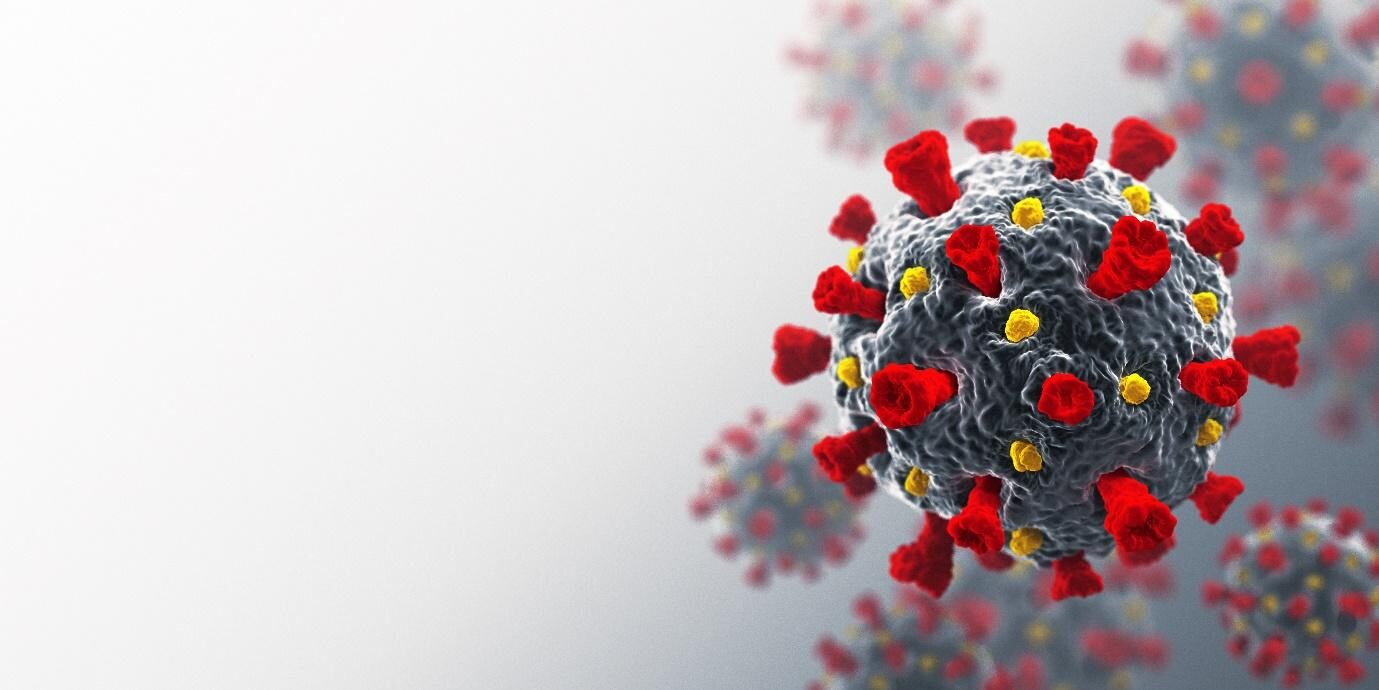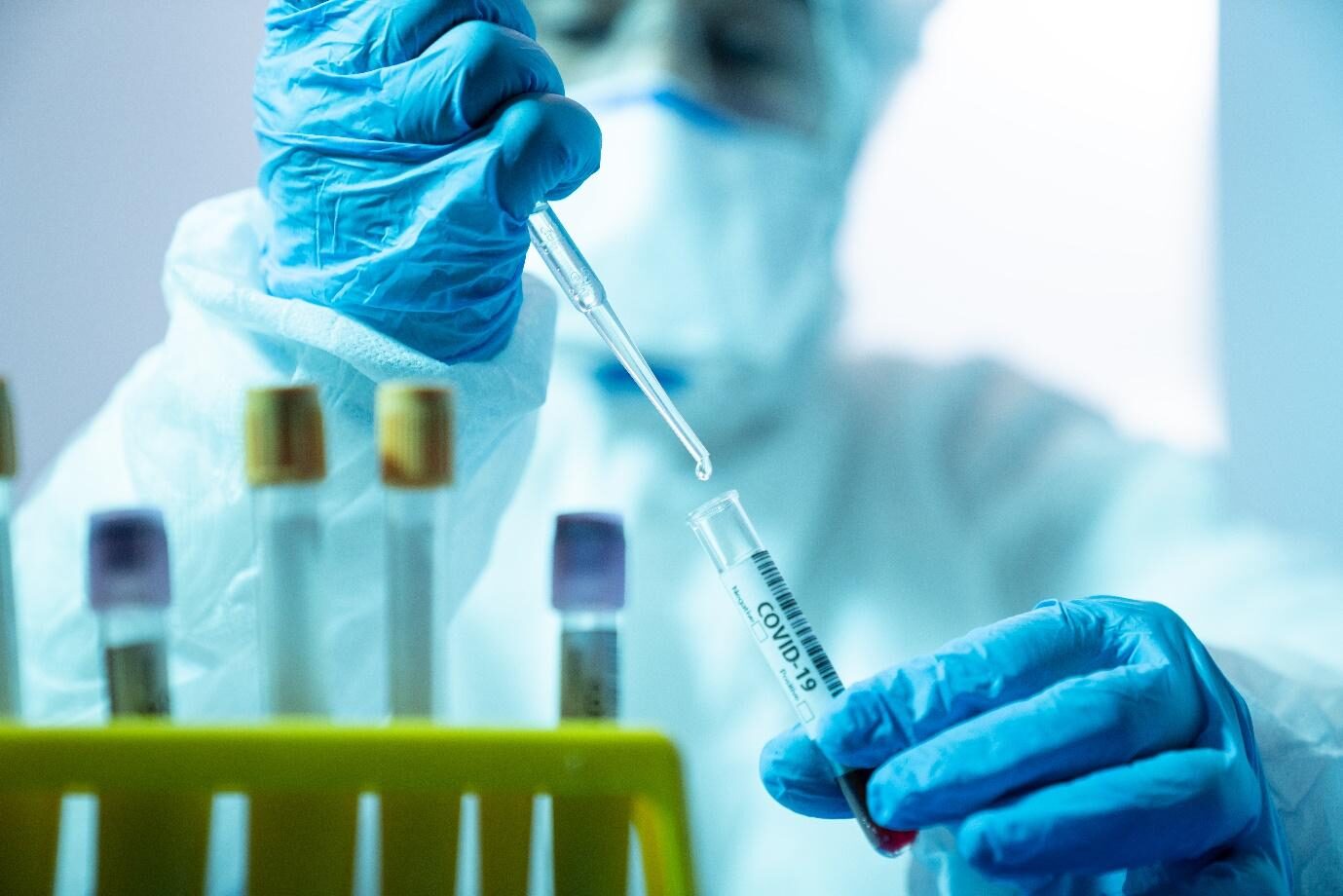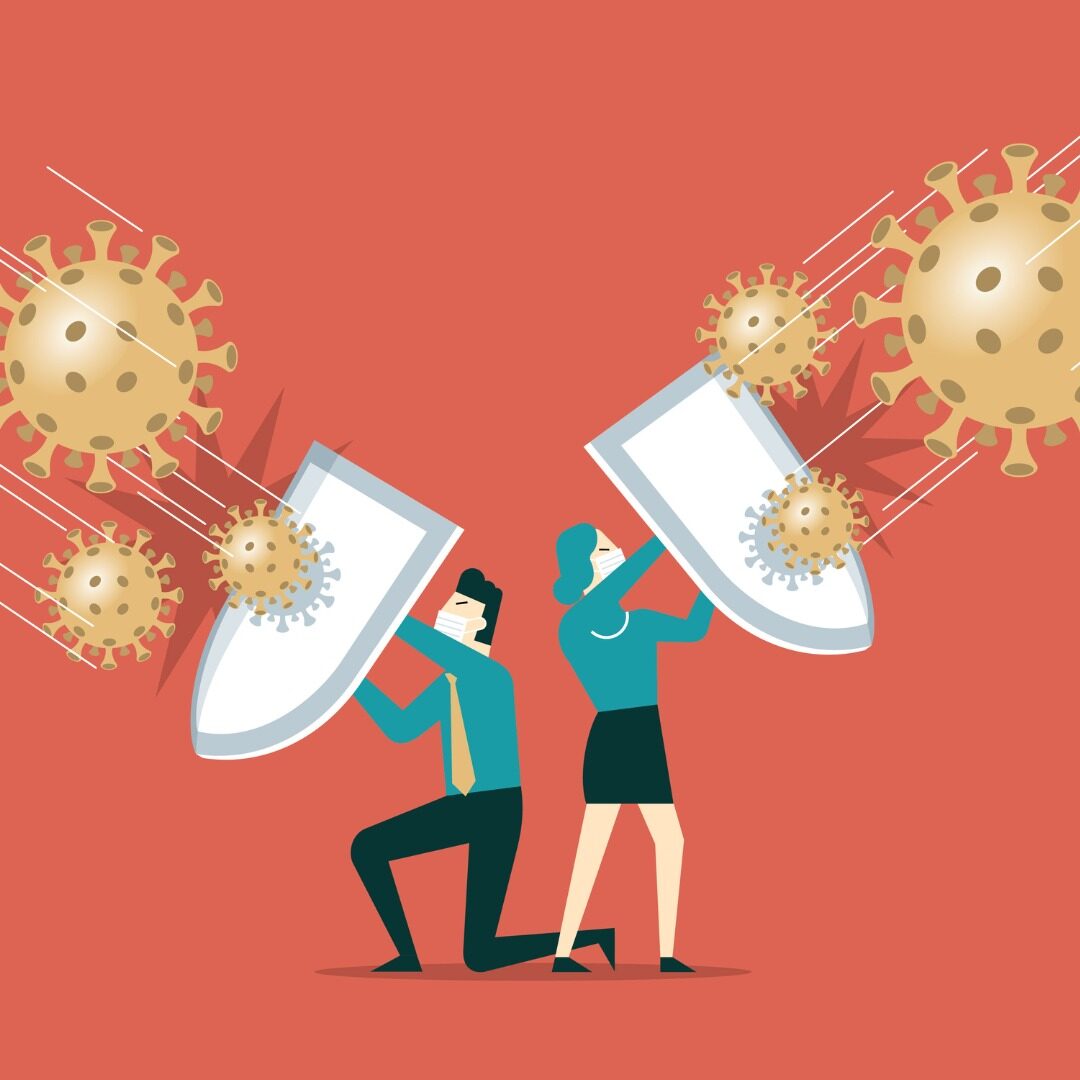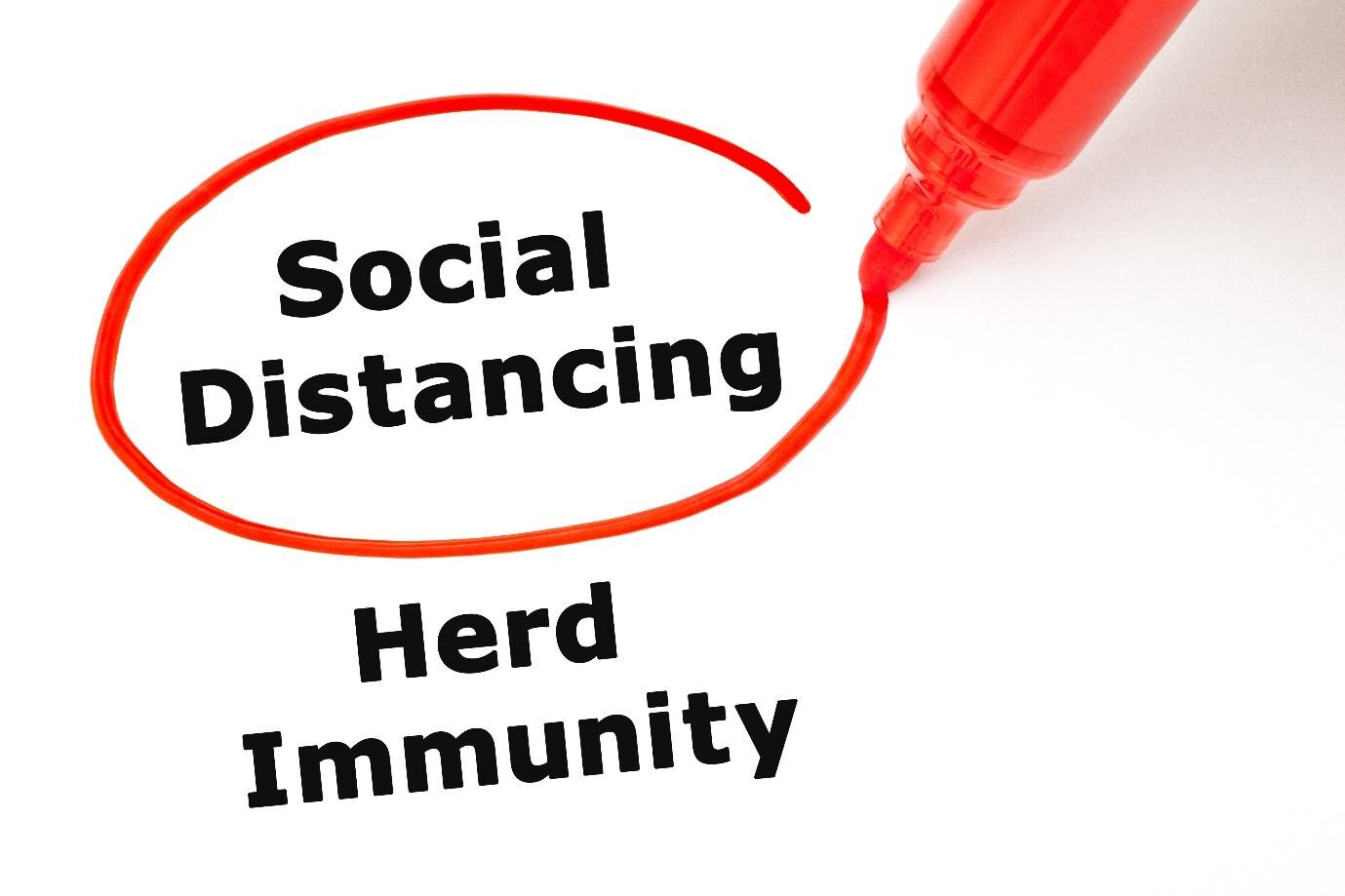
Severe acute respiratory syndrome coronavirus 2 (SARS-CoV-2) is an RNA virus responsible for the coronavirus disease 2019 (COVID-19) pandemic. Just like the coronavirus family it falls under, SARS-CoV-2 has a crown-like appearance when viewed under an electron microscope, with coronam being the Latin word for “crown”. This is because it possesses spike glycoproteins on its envelope. Members of this huge family are usually causative agents for respiratory, enteric, hepatic, and neurological diseases in various types of animal species. Thus, typical symptoms of infection by these viruses include having a fever, cough, or shortness of breath. Furthermore, the National Centre for Immunisation and Respiratory Diseases (NCIRD) in the United States highlighted that the incubation period (meaning the time from a person’s exposure to the virus to the exhibition of COVID-19 symptoms) of SARS-CoV-2 and other types of coronaviruses (like MERS-CoV) ranges from 2 to 14 days.
As depicted by Shi et. al. (2020), an infection involving SARS-CoV-2 can be split into three distinct stages. Firstly, it begins with an asymptomatic incubation period, whereby the virus may or may not be detected. This can result in the further spreading of the virus by the infected individual (also known as a carrier) unknowingly, resulting in an increased severity of the pandemic. This is followed by a second stage, whereby the infected person experiences a non-severe symptomatic period with a definite presence of the viral particles. And in the final stage, the patients would have to undergo a severe respiratory symptomatic period, in which the viral load within their bodies will be at their highest. Nonetheless, even if the symptoms have subsided, research by Wölfel et. al. (2020) warned that patients may continue to shed the virus, thus remaining as a carrier.
Comes with 30 day money back guarantee
Shop now
In terms of the survival abilities of SARS-CoV-2, Chin et. al. (2020) pointed out that the virus can remain infectious for one day when it is deposited onto cardboard material, and for less than three hours when it is placed on tissue paper or printed paper. In general, smooth surfaces can typically shelter the virus for an extended period of time. For example, the viral particles can survive up to three or four days on a plastic surface, whilst on stainless steel and surgical masks, it actually lives up to a week.
Current state and efforts in controlling the pandemic
Around 15% of the confirmed infected cases tend to proceed to the severe stage of infection, with a larger proportion of individuals aged more than 65 years old to have an increased susceptibility to progress into a worsened state. Just like how other respiratory viruses transmit amongst different potential hosts, such as the influenza virus (causes the flu) or the rhinovirus (causes the common cold), the transmission is thought to take place via respiratory droplets that forms as a result of the coughing and sneezing by the infected person.
The degree of infectivity of SARS-CoV-2, or in other words, how easily the COVID-19 disease spreads, can be measured using the unit Ro (reproduction number). Ro represents the average number of individuals that a single infected person is likely to spread the virus to and infect. For COVID-19, the Ro value is projected to be between two or three. When compared to the flu, which has a Ro value of 1.3, this shows that the COVID-19 disease is much more infectious and thus should highlight a greater concern.
It comes with no surprise that the new COVID-19 infection has spread to every single continent on the planet, with the first cases of the disease shown to be connected to the direct exposure of an individual to the virus at the Huanan Seafood Wholesale Market of Wuhan. This results in the presumption that animal-to-human transmission was the main mechanism by which the virus spreads. Later then on the 30th of January 2020, the World Health Organisation (WHO) declared the outbreak to be a Public Health Emergency of International Concern (PHEIC) per the International Health Regulations (IHR, 2005). At that point of time, the COVID-19 disease has already spread to 18 countries, and to make matters worse, four countries have reported the ability of the virus to transmit from human to human. Meanwhile, Rajgor et. al. (2020) discussed that the death rate for the COVID-19 pandemic remains unclear, however, the current data estimated that this disease is ten times more lethal than the flu.

Governments all around the world are currently pushing to set up countermeasures that can effectively curb the potential devastating effects caused by this pandemic. Health organisations like the WHO have been busy with coordinating the flow of infection whilst issuing directions and detailed guidelines as to how the general public can best mitigate the threat presented by the infection. At the point of writing, social distancing and consistent washing of hands are the only ways that could protect a person and the people around them from contracting the COVID-19 disease. On the other hand, for infected individuals, appropriate measures such as having a meticulous control of disease transmission as well as the isolation of patients were employed to allow the provision of proper health care to the infected people and containment of the disease.
Oxygen therapy forms the primary form of treatment intervention that is available for patients exhibiting severe disease symptoms. And in the event of a respiratory failure that cannot be managed using oxygen therapy, mechanical ventilation may be deemed a necessity. Whereas for a septic shock, hemodynamic support would be considered as a mandatory treatment intervention mechanism.
In the meantime, blood plasma transfusion from recovering COVID-19 patients is currently the main topic of clinical trial research in the United Kingdom. Blood plasma is a liquid that appears yellow in colour and constitutes half of a person’s blood volume. After a viral infection, the blood plasma would contain antibodies that were involved in combating that specific virus. In the case of COVID-19 disease, convalescent blood plasma is the antibody-rich plasma originating from someone who has recovered from the SARS-CoV-2 infection.
Blood plasma transfusion has existed for a very long time. As a matter of fact, the first-ever Nobel Prize in Physiology or Medicine was awarded to the research group for their development of serum therapy as a treatment method against diphtheria. The main reason as to why blood plasma transfusion cannot be utilised as a long-term solution to the COVID-19 pandemic would be because of its lack of scalability to treat the global population, unlike a mass vaccination of the whole population. Blood plasma transfusion can be an exhausting and a relatively invasive form of treatment that is only suitable for healthy individuals, and it does take quite some time for patients to recover from this therapy.
With that in mind, researchers across the globe are tirelessly investigating SARS-CoV-2, hoping to gain a better understanding of its mechanisms of transmission, the clinical spectrum of the COVID-19 disease, developing new diagnostic tools, and innovating new ways to prevent or treat the disease. In essence, learning more and more about how an individual builds up their immunity against SARS-CoV-2 would be the vital key to combating this COVID-19 pandemic.
However, at the current state, there has been no standard antiviral treatment method that would be recommended for the treatment of COVID-19, and no suitable vaccines have been developed in order to put an end to this disease. To dive a little deeper into the details, a SARS-CoV-2 vaccine would function by the introduction of a dead or attenuated (i.e. weakened) form of SARS-CoV-2 to a person’s immune system. Thereby, this version of the virus serves as a decoy for the immune system to begin manufacturing antibodies in response to this foreign particle. Henceforth, when the same person encounters the actual SARS-CoV-2 infection, their body will be equipped with the necessary antibodies to fight the infection.
Antibodies are basically proteins that are generated by the immune system to hunt down foreign objects like viruses or bacteria, which are also termed as pathogens. These antibodies then eliminate these pathogens by either attaching to them and rendering them as harmless objects, or they could tag down to be destroyed by immune cells called phagocytes. After a viral infection has been cleared from the body, antibodies would usually remain in the bloodstream, policing the environment in case a similar infection returns to harm the body.
The immune response against COVID-19 disease

Aikiko Iwasaki, a Yale professor of immunobiology and molecular, cellular and developmental biology, explained that a type of immune cell known as B cells play a role in the memory response to the viral infection. They are responsible for the production of antibodies that are extremely specific to the virus particles. In addition to that, another type of immune cells called T cells, are responsible for the complete destruction of virus-infected cells.
Investigations by Dong et. al. (2020) revealed that convalescent COVID-19 patients contain antibodies in their bloodstream for a minimum of a couple of weeks post-infection, but they lacked long-term data to make any further conclusions.
To be a little more specific, we need more neutralising antibodies in our bloodstream, whereby these are proteins that bind effectively to the parts of the SARS-CoV-2 involved in attaching to our host cells. In contrast, there are also non-neutralising antibodies that are present in our immune system that could identify the different components of the virus but fail to attach properly to the pathogen, and thus play no role in preventing the infection of the host cell. There was some good news for the time being, Zhou et. al. (2020) conducted a number of small research initiatives of cells in laboratory dishes and postulated that an infection by SARS-CoV-2 does promote the generation of neutralising antibodies by the immune system. Furthermore, results from several animal studies led by Bao et. al. (2020) suggested these neutralising antibodies do indeed reduce the likelihood of reinfection for at least a fortnight.
Nevertheless, even though the majority of the people infected with SARS-CoV-2 appear to generate antibodies, Dawn Bowdish, a professor of pathology and molecular medicine and Canada Research Chair in Aging and Immunity at McMaster University in Ontario and Wu et. al. (2020) pointed out that there is still much uncertainty and knowledge regarding the essential factors that would completely protect an individual from the COVID-19 disease.
To add on to that, there were divided opinions on the effectiveness of antibody testing. A study on recovering COVID-19 patients in China revealed that 30% of the patients had very little to negligible detectable antibodies in their blood plasma. It appears that these infected patients were able to neutralise the viral infection without needing the help from antibodies. This could be potentially explained by either their strong innate immune response, their adaptive immune response involving T cells, or a combination of both to be enough to help curb the infection. It was also found that the younger individuals tend to have the lowest antibody count in their bloodstream. However, the sample size used in this investigation is very small, so the reliability of these results in a wider context (i.e. the global population) remains to be further studied. Therefore, a number of experts caution against the use of antibody testing to direct policy proposals until further information is known about the percentage of surviving COVID-19 patients that are steadily producing neutralising antibodies.
Despite that, it was observed that an individual’s immunity to the seasonal coronavirus infections, such as those that are responsible for causing the common cold, would begin to deteriorate within two weeks post-infection. And within one year, several people may even become susceptible to reinfection from the virus again. This observation is disturbing given that scientists expect that the development of a successful vaccine against the COVID-19 disease is most likely going to happen only in the next 18 months.
Nonetheless, research on the original SARS-CoV (severe acute respiratory syndrome-related coronavirus) that is responsible for causing severe acute respiratory syndrome share a notable amount of genetic components with SARS-CoV-2, with results from antibody testing revealing that immunity against SARS-CoV reaches its peak at approximately four months whilst providing protection for around two to three years.
The herd immunity strategy against COVID-19

Herd immunity is also known as community immunity or herd/group protection. This phenomenon takes place when a critical proportion of the population develops immunity to a particular disease (meaning to produce the neutralising antibodies necessary for combatting the infection), thereby helping to prevent or delay the spreading of an infectious disease. The main idea is, the greater the number of people who become immune, the higher the chances of us being able to achieve herd immunity. This form of immunity was identified to be a naturally occurring event back in the 1920s, whereby it was noticed that after a significant number of children became infected and developed immunity to the measles infection, the total amount of new infections experienced a momentary decline. This includes those children who are at risk of getting infected.
Herd immunity works in two ways. Firstly, developing natural immunity could occur if many people contract the viral infection and have an immune system that is strong enough to fight the pathogen and build up a solid immune response against future reinfections. On the other hand, many others can receive vaccinations against the disease in order to gain immunity, and vaccinations is the safest possible way to practise herd immunity within any given population.
Several groups of people within every community are dependent on herd immunity to gain protection from the disease. These groups of individuals are often found to be susceptible to contracting the illness and are usually unable to receive the vaccinations in a completely safe manner. Such groups include people without a fully functional immune system, this includes those that do not have a properly working spleen or those infected with HIV. In addition, people with a weakened immune system due to receiving chemotherapy treatment, elderly people, or new-born babies who are too young to safely receive a vaccine are also included in the vulnerable list.
Nevertheless, as mentioned earlier, the proportion of people that must have immunity to the virus in order to achieve herd immunity effectively would be termed as the “herd immunity threshold”. For certain diseases, herd immunity can become effective when around 40% of the people amongst an entire population develops immunity against the virus. Nonetheless, in most scenarios, around 80 to 95% of the population must become immune to the disease in order to prevent the virus from transmitting any further.
In essence, health authorities conclude that herd immunity is not the ultimate solution to preventing the spread of SARS-CoV-2 at this given moment, given that a vaccine has not yet been developed and natural immunity is the only way to go. This is due to the number of deaths that might be a side effect of fostering this type of herd immunity. For example, The Department of Health and Social Care in the United Kingdom has explained that herd immunity does not form part of the UK’s current action plan to combat the COVID-19 pandemic. Instead, it should be seen as “a natural by-product of an epidemic”.
Besides that, the percentage of the population that is required to be immune as part of achieving the herd immunity threshold can be calculated by 1 – (1/Ro). Using a Ro value of 2.5 for SARS-CoV-2, this results in the threshold being 60%, meaning that at least 60% of the UK citizens must be infected by the virus in order to successfully obtain herd immunity in the country. This, as a result, would not be an ideal case scenario. Moreover, the moment the proportion of vaccinated people in the given population falls under the herd immunity threshold, any exposure to the COVID-19 disease may transmit very rapidly throughout the rest of the community.
Professor John Edmunds, an infectious disease expert at the London School of Hygiene and Tropical Medicine specifically mentioned that even if herd immunity has been achieved, the COVID-19 pandemic will not instantly come to a halt because there will still be contagious individuals generating new cases each day. Furthermore, it was predicted that people need to become immune to SARS-CoV-2 for a minimum of one or two years if achieving herd immunity for the population is the main goal. Thus, in the meantime, the best possible method to contain the pandemic would be to practice social distancing and regular handwashing.
Conclusions and future directions

Based on the discussions, it is clear that a vaccine remains the best possible method to provide all healthy adults, teenagers, and older children with the herd immunity that is mandatory in order to protect people who cannot access the vaccine or are too sick to develop natural immunity against SARS-CoV-2. However, the development of a suitable vaccine is still believed to be at least one year away before reaching the manufacturing and mass distribution stage.
Thus, prolonged efforts will be needed to prevent any further disasters caused by the COVID-19 disease until a scientific breakthrough has been achieved. So, the best actions that all governments could take would be to ensure that the general community remains well-informed, have proper access to the diagnostic test kits when required, and to constantly encourage social distancing in order to reduce the spread of this contagious virus.

Anastasiia Myronenko
Anastasiia Myronenko is a Medical Physicist actively practicing in one of the leading cancer centers in Kyiv, Ukraine. She received her master’s degree in Medical Physics at Karazin Kharkiv National University and completed Biological Physics internship at GSI Helmholtz Centre for Heavy Ion Research, Germany. Anastasiia Myronenko specializes in radiation therapy and is a fellow of Ukrainian Association of Medical Physicists.